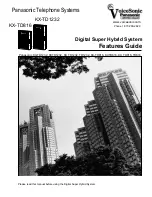
Operation Manual – Location Server Configuration
H3C XE 200/2000 IP PBX
Chapter 3 Configuration Examples
3-38
[UA003-Ethernet0/0] quit
# Configure voice entities.
[UA003] voice-setup
[UA003-voice] dial-program
[UA003-voice-dial] select-rule type-first 2 1 3
[UA003-voice-dial] entity 1111 voip
[UA003-voice-dial-entity1111] address sip proxy
[UA003-voice-dial-entity1111] match-template ....
[UA003-voice-dial-entity1111] quit
[UA003-voice-dial] entity 8802 pots
[UA003-voice-dial-entity8802] line 0
[UA003-voice-dial-entity8802] match-template 8802
[UA003-voice-dial-entity8802] return
# Configure SIP user agent.
[UA003] voice-setup
[UA003-voice] sip
[UA003-voice-sip] sip-server master 192.168.10.10
[UA003-voice-sip] sip-id ua003
[UA003-voice-sip] register-enable on
3.12 NAT/FW Tunnel Traversal Between Private and Public
Networks
I. Network requirements
An NAT/FW separates a private network from a public network. The public network
contains one voice gateway (H.323 gateway 2) and two XE IP PBXs. One XE IP PBX
operates as an LS (location server), and the other operates as a PS (process server 2).
The private network contains one voice gateway (H.323 gateway 1) and one XE IP PBX.
This XE IP PBX operates as a PS (process server 1).
Summary of Contents for XE 200/2000 IP
Page 7: ...Basic Configuration ...
Page 42: ...Process Server Configuration ...
Page 82: ...Location Server Configuration ...
Page 182: ...Feature ...
Page 259: ...System Management ...
Page 341: ...IP Performance and Application ...
Page 349: ...Media Server ...
Page 360: ...Call Services ...
Page 507: ...Appendix A ...
Page 511: ...Appendix B ...


































